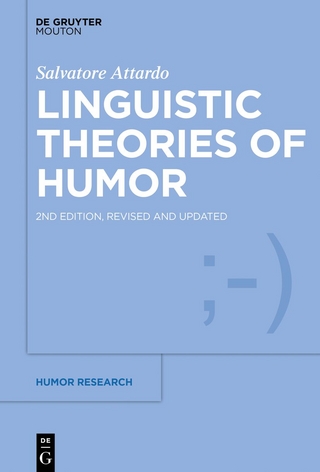
The Writer as Liar
Narrative Technique in the Decameron
Seiten
2020
Routledge (Verlag)
978-0-367-20738-0 (ISBN)
Routledge (Verlag)
978-0-367-20738-0 (ISBN)
Originally published in 1975, The Writer as Liar examines the Decameron and argues that Boccaccio’s story telling depends for its success not on the combinative assemblage of narrative blocks, which are manipulated by a craftsman who lies and cheats with raw material in to produce a living work.
Originally published in 1975, The Writer as Liar examines the literary game of falsehood as it is portrayed in the Decameron. The book examines how Boccaccio’s collection of tales has a ‘frame’ story, its own built-in key to the art of story-telling, its internal logic of truth and falsehood, as well as its moments of self-parody, pure narrative intrigue and sophisticated sexual symbolism. The book formulates the argument that Boccaccio’s story telling is seen as an artfully malicious operation, depending for its success not on some abstract concept of narrative originality or the accurate depiction of human psychology, but on the combinative assemblage of narrative blocks, which are manipulated by a craftsman who must lie and cheat with raw material in order to produce a living work – therefore depicting the artist as a liar.
Originally published in 1975, The Writer as Liar examines the literary game of falsehood as it is portrayed in the Decameron. The book examines how Boccaccio’s collection of tales has a ‘frame’ story, its own built-in key to the art of story-telling, its internal logic of truth and falsehood, as well as its moments of self-parody, pure narrative intrigue and sophisticated sexual symbolism. The book formulates the argument that Boccaccio’s story telling is seen as an artfully malicious operation, depending for its success not on some abstract concept of narrative originality or the accurate depiction of human psychology, but on the combinative assemblage of narrative blocks, which are manipulated by a craftsman who must lie and cheat with raw material in order to produce a living work – therefore depicting the artist as a liar.
Guido Almansi
Introduction 1. Narrative Screens 2. Literature and Falsehood 3. Bawdry and Ars Combinatoria 4. The Meaning of a Storm 5. Passion and Metaphor Bibliographical Conventions Index
| Erscheinungsdatum | 15.01.2021 |
|---|---|
| Reihe/Serie | Routledge Library Editions: The Medieval World |
| Verlagsort | London |
| Sprache | englisch |
| Maße | 138 x 216 mm |
| Gewicht | 453 g |
| Themenwelt | Geisteswissenschaften ► Sprach- / Literaturwissenschaft ► Anglistik / Amerikanistik |
| Geisteswissenschaften ► Sprach- / Literaturwissenschaft ► Literaturwissenschaft | |
| ISBN-10 | 0-367-20738-9 / 0367207389 |
| ISBN-13 | 978-0-367-20738-0 / 9780367207380 |
| Zustand | Neuware |
| Informationen gemäß Produktsicherheitsverordnung (GPSR) | |
| Haben Sie eine Frage zum Produkt? |
Mehr entdecken
aus dem Bereich
aus dem Bereich
Poetik eines sozialen Urteils
Buch | Hardcover (2023)
De Gruyter (Verlag)
59,95 €
Buch | Softcover (2024)
belleville (Verlag)
20,00 €


